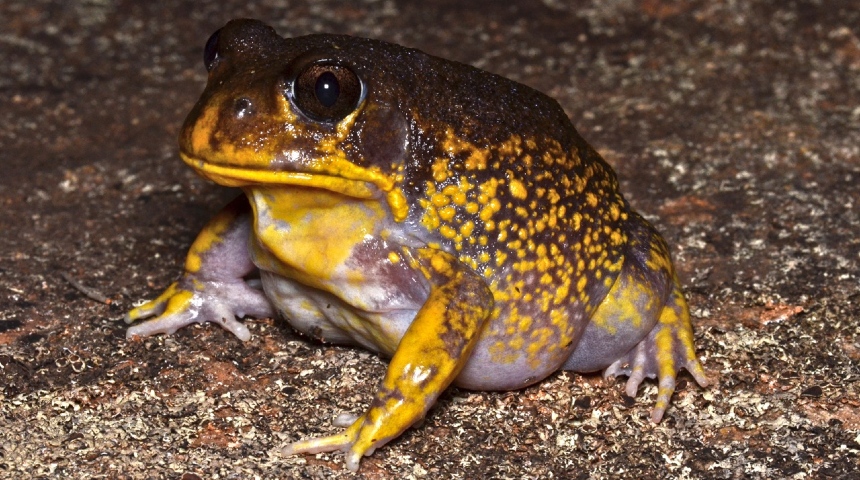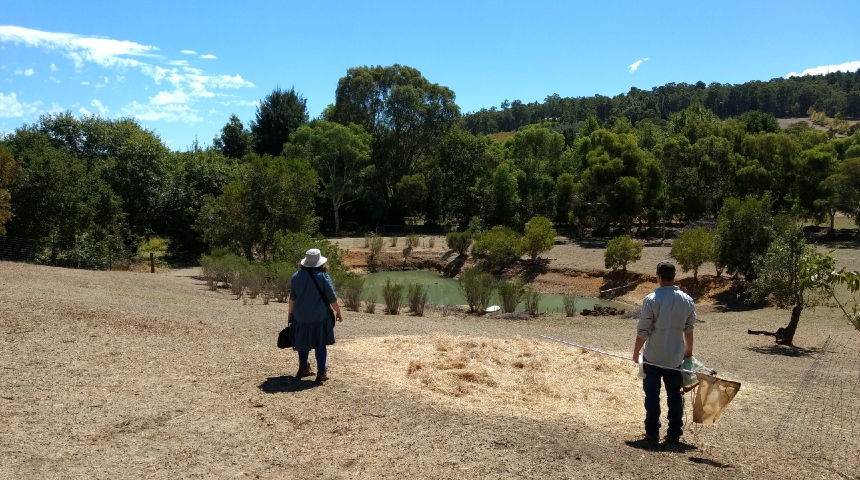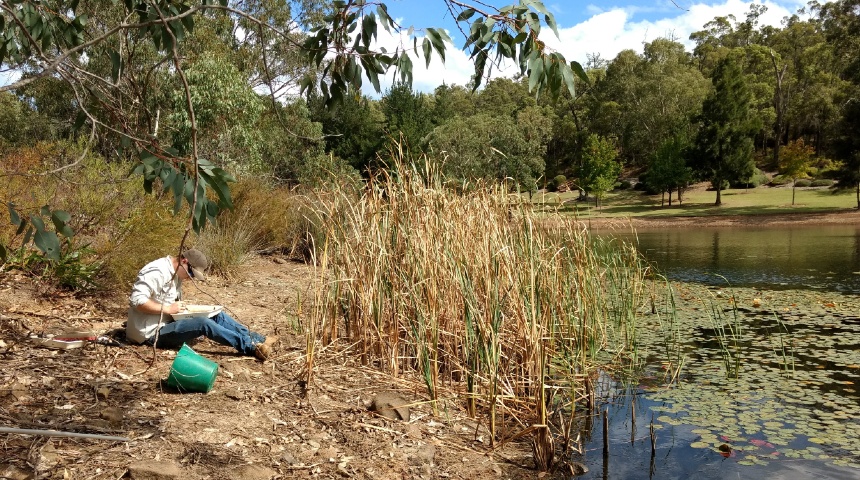Murdoch University researchers are collaborating with citizen scientists to use farm dams as refuges for endangered freshwater plants and animals.
Southwestern Australia is renowned as a biodiversity ‘hotspot’ for many freshwater plants and animals which are found nowhere else in the world. Species including the Hooting Frog and 16 different types of dragonflies are unique to this corner of the world.
But with streams and wetlands increasingly drying up during summer months, many of these inhabitants are under threat.
Their salvation may lie in farm dams dotted across our wide brown land.
Researchers from Murdoch University and staff from the Eastern Metropolitan Regional Council (EMRC) have enlisted the help of ‘citizen scientists’ to determine whether farm dams can provide a refuge from drying waterways for endangered species.
“Freshwater plants and animals rely on naturally occurring perennial streams and pools to survive summer and autumn, however with the continuing decline in rainfall, most are now dry at this time” said Dr Belinda Robson, who led the project with Dr Ed Chester.
“Perennially inundated farm dams on private properties potentially offer a drought refuge for these species, so this project collected data on the species of aquatic plants, invertebrates, tadpoles, frogs and birds currently using farm dams.”
A community collaboration
The Farm Dams project recruited landowners and volunteers in the Shire of Mundaring and the Cities of Swan and Kalamunda in Western Australia who recorded waterbirds and frog calls at the farm dams using the apps ‘BirdData’ and ‘FrogID’. Birdlife Australia was also engaged to develop a waterbird guide for the region.
With funding jointly by Lotterywest, Murdoch and the EMRC, the research team sampled water quality, aquatic plants, invertebrates and tadpoles across the study area in spring and autumn; the same times when the citizen scientists recorded waterbirds and frogs in more than 40 private dams and surrounding natural waterbodies.
The project also sought to determine what the characteristics were of these dams which supported the most native species.
 Image caption: The hooting frog (H. barycragus) is a species unique to Western Australia.
Image caption: The hooting frog (H. barycragus) is a species unique to Western Australia.
“Stage one of the project has now been completed and we are extremely happy with the outcomes. 257 species of invertebrates were recorded, with individual dams supporting a maximum of 44 species, alongside 15 species of native aquatic plants. Very few invasive species were recorded, and water quality was generally good” said Dr Robson.
Community members acting as citizen scientists made a valuable contribution, complementing the data collected by Murdoch University researchers.
“University researchers can only visit the dams occasionally, but the citizen scientists are on their properties all the time, so they can record the presence of mobile animals like birds more effectively than we can,” said researcher, Dr Ed Chester.
“Their findings, which came from areas not previously recorded, have been added to the Australian Museum national frog call database. And their contribution to the Waterbird Guide for Perth will be used by the community into the future,” he added.
Biodiversity through connectivity
The project’s second objective sought to identify the habitat difference between paddock and on-channel dams (those connected to streams) and how they supported different components of biodiversity due to their differing degrees of connectivity.
“Our studies showed that paddock dams contained more invertebrate species than dams on stream channels, perhaps because paddock dams tend to be free from exotic predators, such as Gambusia, also known as mosquitofish.
“This species is considered a noxious pest for its aggressive behaviour towards other fish, and tadpoles and it has negatively impacted many native species of fish, frogs, and dragonflies across Australia” said Dr Robson.
“The capacity of each environment, whether on-channel dams or paddock dams, varied in their biodiversity due to the movement of feral predators, so different management approaches will be required for each,” she added.
Fauna friendly environments
So, what are the dam characteristics which most encourage native diversity?
According to Dr Robson, the studies showed that dams containing groundwater springs, an absence of predators and submerged aquatic plants, which provide shelter and food for the dam’s inhabitants, were the most ‘fauna friendly’.
 Image caption: The research team surveys another potential dam refuge.
Image caption: The research team surveys another potential dam refuge.
The next steps are to trial adding some other forms of habitat to farm dams, in ways compatible with the uses that landholders have for dams; and to trial some potential ways to control Gambusia.
“Once we have these tools developed to support farm dams as refuges for native species, they can be rolled out across the southwest for anyone with a dam who is interested in keeping native species in our landscapes. At present, we are seeking funding to develop these tools,” said Dr Robson.
Empowering citizen scientists
The landowners and volunteers involved in the study continue to embrace the opportunities and engage with the conservation community this research has created.
“It was encouraging to note that they were excited by the results and the potential to do more with their dams. As a result of this project’s positive outcomes, a number of new community groups have been formed,” said Dr Robson.
“We now have landholders with more than 50 farm dams engaged with the project, who are keen to make their dams available for trialling new biodiversity management interventions.”
This research supports UN Sustainable Development Goals 13 and 15.


 Image caption: The hooting frog (H. barycragus) is a species unique to Western Australia.
Image caption: The hooting frog (H. barycragus) is a species unique to Western Australia. Image caption: The research team surveys another potential dam refuge.
Image caption: The research team surveys another potential dam refuge.